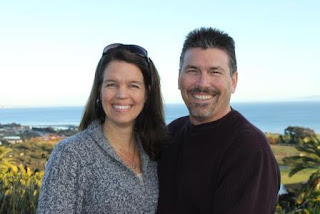Decline & Renewal in West Coast Churches of Christ, part 4
The Decline of the College Church of Christ (Fresno), part 1
When Jim Woodroof published those words in the foreword to his 1990 book The Church in
Transition, few at the College Church of Christ in Fresno (College Church)
would have likely heard the alarm or seen the signs of decline. The College
Church was at its peak: over 900 members, two Sunday services, a recently
expanded building, and a growing budget to support local ministries and foreign
missionaries.
"The Church of Christ in
America is not in good health. Her divided ranks, her declining membership, and
the noticeable diminishing of her missionary force over the last 20 years are
alarms that are sounding, calling for loving care and immediate attention."
The College Church’s
origins go back to 1964. It was an intentional plant by members of the Palm
Avenue Church of Christ. Palm Avenue leadership foresaw two important trends.
First, the city of Fresno was growing to the north and east. Second, the
university campus at Fresno State would become increasingly important.
So they bought property on
the northeast edge of Fresno, close to the Fresno State campus. The 8 purchased
acres had been farmed and were still surrounded by vineyards and orchards. They
built an auditorium, fellowship hall and classrooms. The first Sunday service
was on December 6, 1964, with an exuberant crowd of 540 people. John Banks was
hired as the first preacher, and regular Sunday attendance settled in at around
360 folks.
This was a healthy DNA for
a new church. Planting this congregation was a visionary move by the Palm
Avenue leadership, and they enjoyed goodwill and broad cooperation from area
Churches of Christ. This spirit of mutual work would continue for years.
The College Church
continued to grow, not dramatically but steadily on through the 1970s. In the 1980s,
membership climbed sharply. The influx of new members was partly due to the
decline and eventual demise of the Arlington Heights Church of Christ. Part of
the numerical success, though, was a simple matter of momentum. It was an
innovative church with strong ministers and leaders.
They weren’t immune to
tragedy—the shocking motorcycle death of a young preacher and the sexual sin of
a youth minister—but the College Church seemed resilient. There was a positive
and forward-thinking air about the congregation that looked impervious to
trouble or decline. During the ministry years of Rusty Bolton, Clifford Reeves
and Randy Gray, the College Church seemed able to undertake any project and
succeed. There were many large Churches of Christ on the West Coast at that
time, and the College Church may well have been the largest of them all. It was
strong and independent, and nearly every West Coast preacher would have jumped
at the chance to preach there.
So when Jim Woodroof
sounded the alarm for Churches of Christ, the College Church would likely have
been one of many churches across the US who—if they read his words—might have
surmised that he was like Chicken Little, pointlessly screaming that the sky
was falling. The College Church could hardly have realized how true his words were.
The apparent invincibility of the College Church would soon look more and more
vulnerable. The next two decades would bring a steady decline in membership and
resources.
Next time, we’ll hear the
rest of the story.




Comments